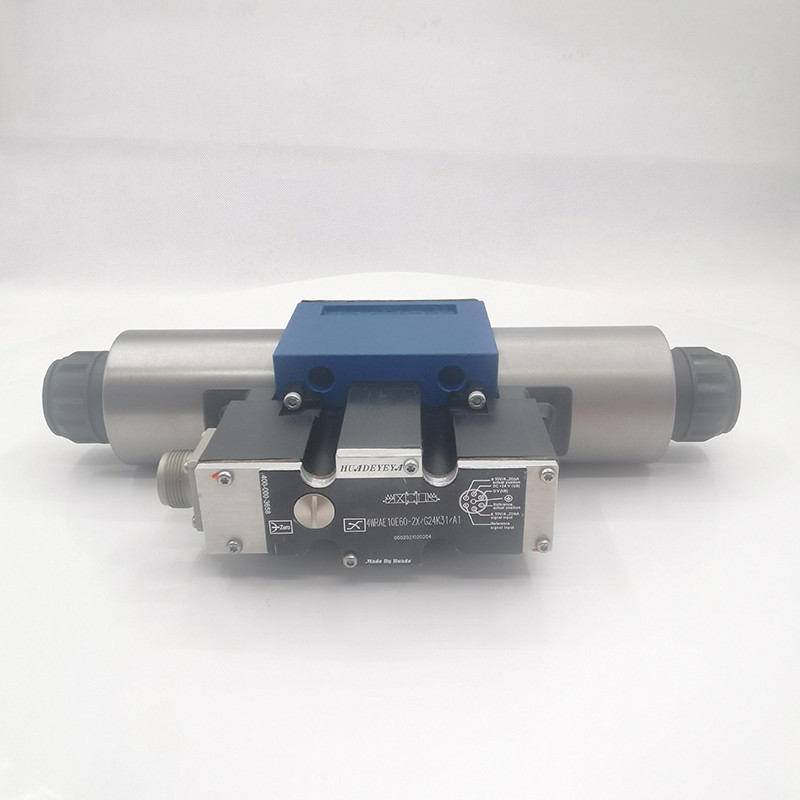How Proportional Valves Work and Their Types
Proportional valves in hydraulic systems are classified according to their main functions, and are divided into four categories: pressure control valves, flow control valves, directional control valves, and proportional composite control valves. Each type can be divided into two structural forms: direct control and pilot control. Direct control is used in small-flow and low-power systems, and pilot control is used in large-flow and high-power hydraulic systems to form an electro-hydraulic proportional valve.
① Proportional pressure valve: There are proportional relief valve, proportional pressure reducing valve, proportional sequence valve, which can continuously adjust the pressure.
② Proportional directional valve: The input current determines the flow direction of the liquid flow, and the stroke of the spool is proportional to the input current. The directional valve is divided into two categories: with position sensor and without position sensor.
③ Proportional flow valve: There are proportional speed regulating valve and proportional overflow flow control valve, which can continuously adjust the system flow or speed.
④ Proportional composite control valve: It is generally composed of a combination of two valves with different functions in structure, such as a composite control valve composed of a combination of proportional directional valve and fixed differential pressure reducing valve, so that the flow through the hydraulic system valve is not affected by the load , suitable for use in open-loop control systems.

The core of the proportional control of the hydraulic system is the proportional valve for water. The input unit of the proportional valve is an electrical-mechanical converter, which converts the input signal into a mechanical quantity. Converters are in the form of servo motors and stepper motors, force motors and torque motors, and proportional electromagnets. However, most of the commonly used proportional valves use proportional electromagnets. The proportional electromagnet is designed according to the electromagnetic principle, which can make the mechanical quantity (force or torque and displacement) generated by it proportional to the size of the input electrical signal (current), and then continuously control the position of the hydraulic valve spool, thereby realizing continuous control Hydraulic system pressure, direction and flow. The structure of the proportional electromagnet is shown in Figure 1. It consists of a coil, an armature, a push rod, etc. When a signal is input to the coil, the magnetic field in the coil exerts a force on the armature, and the armature is proportional to the magnitude and direction of the signal current in the magnetic field. , continuously move, and then drive the push rod to move through the fixed pins, so as to control the movement of the spool valve. The most widely used proportional electromagnet is the high voltage DC proportional electromagnet.
The types of proportional electromagnets are mainly divided into the following categories according to their working principles:
①Force control type: This type of electromagnet has a short stroke, only 1.5 mm, and the output force is proportional to the input current. It is often used in the pilot control stage of proportional valves.
②Stroke control type: It is composed of a force control type and a load spring. The force output by the electromagnet is converted into an output displacement through the spring. The output displacement is proportional to the input current. The working stroke is 3 mm, and the linearity is good. It can be used in direct control on the proportional valve.
③Position adjustment type: After the position of the armature is detected by the sensor in the valve, a feedback signal is sent out, and the position of the armature is re-adjusted after the comparison in the valve, forming a closed-loop control, with high precision. The position of the armature has nothing to do with the force, in terms of accuracy Almost comparable to a servo valve. The proportional valves produced by many famous companies in the world all adopt this structure.
LEARN MORE
- Category:
- Review
- 8 Feb, 2023
- 1072 views
- No comments





